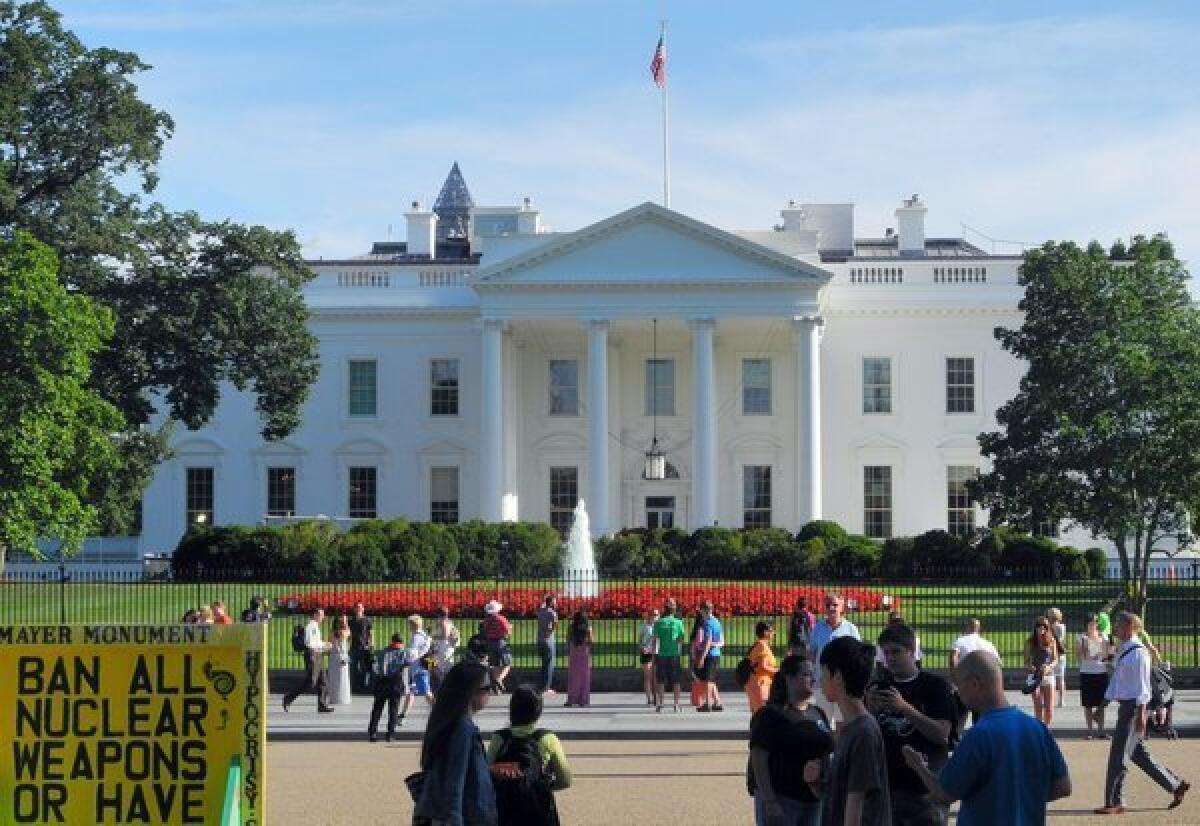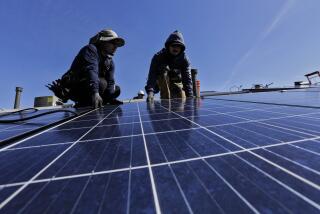After delays, solar panels again being installed on White House

- Share via
WASHINGTON – The White House began installing solar panels this week on the first family’s residence, finally making good on a pledge President Obama made almost three years ago.
The installation follows a speech Obama made in June on tackling the causes of climate change and dealing with its effects. Administration officials announced in October 2010 that solar panels would be installed in the White House as part of an initiative to make government buildings more energy efficient, but the work was repeatedly delayed.
Environmentalists and solar energy companies welcomed the news.
“Solar is fast becoming America’s most popular home improvement, and we are very pleased to see the first family follow the American people’s lead. Support for solar energy is one issue that rises above the political fray,” said a statement from Sungevity, an Oakland-based solar company.
Sungevity was part of a coalition of solar businesses and environmental groups that petitioned the administration in early 2010 to bring back solar power to the White House. President Carter had solar panels installed there, but President Reagan had them taken down in 1986.
When the project was announced in 2010, Nancy Sutley, chairwoman of the White House Council on Environmental Quality, said it would show that “American solar technologies are available, reliable, and ready for installation in homes throughout the country.”
Renewable sources generate only a small portion of the country’s electricity, but their share has grown. The United States installed 723 megawatts of solar energy in the first quarter of 2013, which accounted for more than 48% of all new electric generation capacity built over that period, according to the Solar Energy Industries Assn., a Washington trade group.
The White House said the project would “help demonstrate that historic buildings can incorporate solar energy and energy-efficiency upgrades.”
The administration said the solar equipment is “American-made,” but declined to give any other details, including the cost, the name of the vendor, how much energy it will save or when it will come on line.
More to Read
Get the L.A. Times Politics newsletter
Deeply reported insights into legislation, politics and policy from Sacramento, Washington and beyond. In your inbox three times per week.
You may occasionally receive promotional content from the Los Angeles Times.











